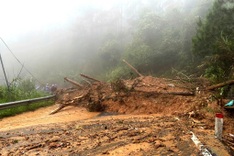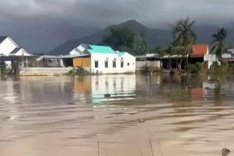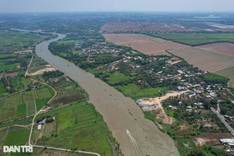
The moving direction of Typhoon Fengshen (Photo published by VNA)
As of 1 pm on October 20, the storm’s centre was located near 18.3 degrees north latitude and 115.9 degrees east longitude, about 460 km east-northeast of the Hoang Sa Special Zone, with maximum wind speeds of level 9-10 (75-100 km per hour), gusting up to level 12.
According to the National Centre for Hydro-Meteorological Forecasting, the storm is expected to strengthen to level 11, gusting to level 13, and may alter its path and intensity as it interacts with cold air from October 21. Between October 22 and 26, central provinces, especially from Ha Tinh to Quang Ngai, are forecast to experience widespread, prolonged heavy rainfall, with some areas receiving over 900mm, posing a high risk of flash floods, landslides, and severe flooding.
The PM emphasised that this is a highly complex storm system with the potential for prolonged heavy rain, flash floods, and serious landslides across many localities.
He urged the Ministries of National Defence, Public Security, Agriculture and Environment, Construction, and Industry and Trade, along with coastal provinces from Ha Tinh to Dak Lak, to implement the highest level of preparedness and response. Authorities must anticipate worst-case scenarios, ensure the safety of residents, and minimise property damage.
Localities were directed to track all vessels at sea, instructing them to leave or avoid hazardous areas, and to proactively evacuate residents from regions vulnerable to landslides, flash floods, or deep inundation.
Immediate measures must be taken to ensure the safety of dams and reservoirs, regulate water levels in hydroelectric and irrigation systems, and safeguard downstream communities.
Fengshen lashed the northern and central Philippines on October 19, leaving at least seven people dead and forcing 47,000 to evacuate.
Nearly 14,000 people who evacuated were still displaced from their homes by October 20, the Philippine government’s disaster-mitigation agency said.




















